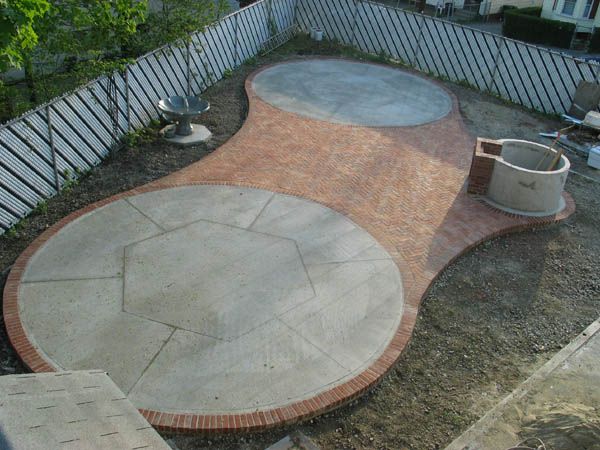The Oven has been on the back burner for a while but I'm back on track this season and plan to finish it up. I have decided to pour the slab out an alumina castable concrete. I'm going to insulate it from the bottom via stick pins and ceramic blanket. So 2" of the 5 inch slab became "thermal mass" instead of the vermiculite concrete. Is this too much thermal mass? I will be setting a premio 120 oven floor on top of 5 full inches of aluminate concrete.
X
-
Thermal mass in the hearth
Welcome aboard Sailfish,
Let me make sure I have this right. You are thinking of putting the Premio cooking floor on 5" aluminate concrete, with blanket insuation below that? Is that right?
I think that could be too much mass below the cooking floor, and it could make it more difficult to keep the oven floot heat at the high temp you want for pizza and other high heat cooking. It would also slow down heat up time. Basically, you would be trying to heat up the entire 7" of mass (the Premio floor and the aluminate concrete) -- which would take a long time. It could also impact the "responsiveness" of your floor; how easy it is to keep at high heat, or bring back up to high heat.
What advantages are you looking to gain from the extra mass?
Also, if you are going to put your vermiculite layer under the concrete thermal layer, it is easier to either pour vermiculite, or use rigid board. I think a blanket would get squashed. Also, you need to go pretty thick with that insulating layer, to make sure you don't loose heat out the bottom.
After a lot of experiementing (and the advise of our producers), we've found that putting the cooking floor directly on the vermiculite layer works great for pizza and high heat cooking, and that it still retains the heat you want for baking and roasting, and cooking lager volumes of food.
If you want more mass under the floor, you could consider the "island hearth" where you set a layer of thermal mass under the floor, but fully surrounded by vermiculite concrete. For example, in a 7 1/2" hearth, you could pour 3" standard concrete at the bottom, 2-3" vermiculite concrete next, then set 1-2" aluminate concrete or firebricks under the cooking floor (with vermiculite concrete around it).
That's what we did at the demo kitchen here in Healsburg, and it's working great.
Still, most backyard pizza ovens really don't need that extra layer under the floor. Most commercial pizza ovens have 3"-4" cooking floors.
I hope this makes sense and is helpful.
Let me know what you think.
JamesLast edited by james; 05-14-2006, 05:27 PM.
-
Thanks James. Good advice at a critical time. I'm doing the slab this holiday weekend. I really wasn't looking for extra mass, It's just how things worked out designing the round stand. I can reduce the aluminate concrete under the floor to 3 or 3 1/2". I read a little about the heat leaching away from the floor to the slab at this site somewhere and became concerned. The ceramic blanket is installed under the slab after the suport form is stripped away. It will be held in place with stick pins and clam washers. It should remain thick and fluffy. I'm thinking about using 2" blanket. Do you think it would need more? Here's a pic of the project I abandoned for a year,... But I'm back at it!
[IMG] [/IMG]
[/IMG]
Comment
-
Now that's beautiful. Wow. It's time to get cooking!
I think the standard installation, with 3 1/2" of standard concrete with rebar for structural support underneath, and 4" of vermiculite concrete on top is the right way to go. 4" of insulating concrete will definitely stop heat from leaching south into your stand, and it will keep the heat where you want it (in the oven).
It's easy to do, and cost-effective. You don't have to mess with blanket insulation if you don't want to.
It doesn't look like you are going to be starting a commercial bakery from your back garden, so I think it will work great.
Here is the drawing for the hearth design. Also, do you have the Premio installation guide? That will be very useful.
This is a great outdoor kitchen. Have fun.
James1 Photo
Comment
-
Wow! That thumbnail is totaly oposite of the insulating hearths I have been reading about. But it makes a lot of sense. The oven is 100% surrounded by insulation. I downloaded the PFD's that show the insulating layer on the bottom.
I guess I'll scrap the blanket idea and go with the integral layer.
Comment
-
Re: Too Much Thermal Mass?
That is striking! It looks so clean. I admire the organic look of the surrounding pad as well. It is a work of art my friend. I look forward to seeing more pictures. I would like to see more detailed pics of the slab and the oven base. It looks very cool!
ChadRenaissance Man
Wholly Man
Comment
-





Comment